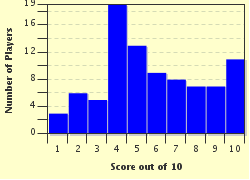Quiz Answer Key and Fun Facts
1. A curious pattern emerges when you plot all non-negative numbers in a spiral formation. Circling all the prime numbers on this spiral creates what kind of pattern?
2. Polar coordinates can be used to graph a number of symmetrical objects found in nature, such as hearts, flowers, and leaves. Which two variables are used to graph their images?
3. If you've ever wondered how two radio signals can be heard at the same time, the answer can be found in a function that decomposes a wave-form into its constituent parts. What's this function called?
4. You might know the answer to this if you've seen the movie "Interstellar". What is the name given to a four dimensional cube?
5. What does the Fundamental Theorem of Calculus tell us about the area under a curve between two points?
6. Say you place a random point anywhere inside an equilateral triangle. Viviani's theorem states that the height of the triangle is equal to which three lines that start at the point?
7. In any statistical analysis, Benford's Law can be used to predict how often the number "1" will appear first in a string of numbers. Like the number of Goldberg Variations, what percent of the time does this happen?
8. Bombelli's solution for the square root of negative numbers was rejected by many mathematicians of his time. Chief among them was Descartes, who came up with a disparaging term that we still use today. Now these numbers are used in many advanced mathematical concepts and are essential to describing our world. What are they called?
9. A polyhedron is any three dimensional shape that has multiple faces. With any convex polyhedron, what happens when the number of its edges are subtracted from its vertices and added to its faces (V - E + F)?
10. By iterating a shape or function over and over again, you can find the same patterns emerging on smaller scales inside the main one. The Sierpinski Gasket, Koch Snowflake, and Mandlebrot Set all demonstrate which kind of pattern?
Source: Author
atlas84
This quiz was reviewed by FunTrivia editor
rossian before going online.
Any errors found in FunTrivia content are routinely corrected through our feedback system.


